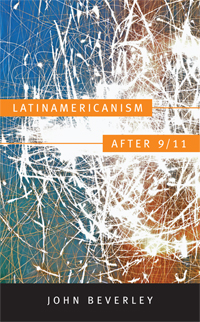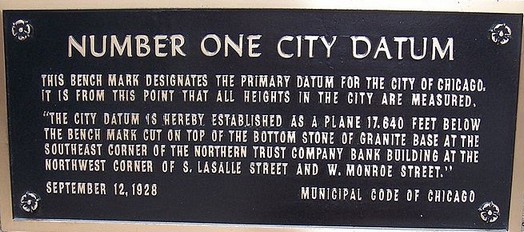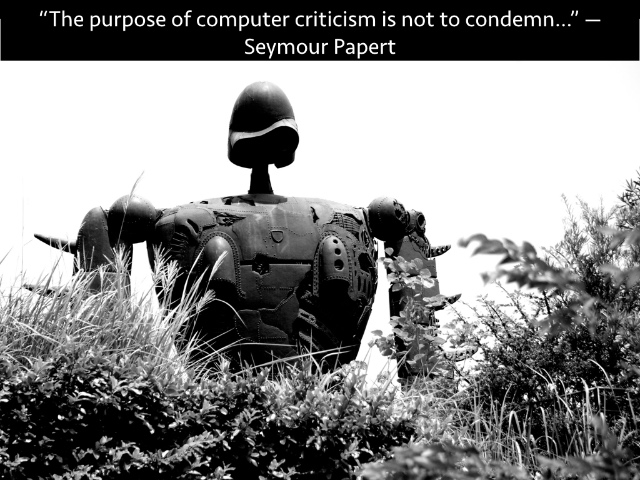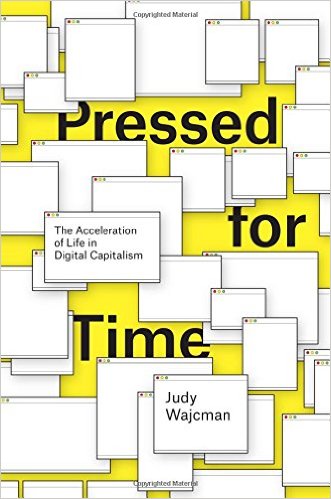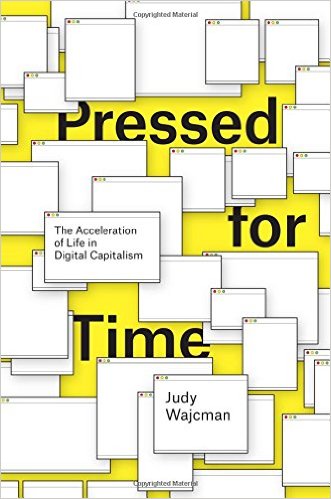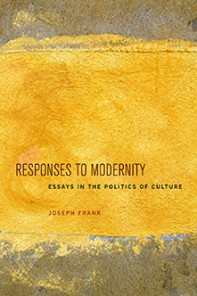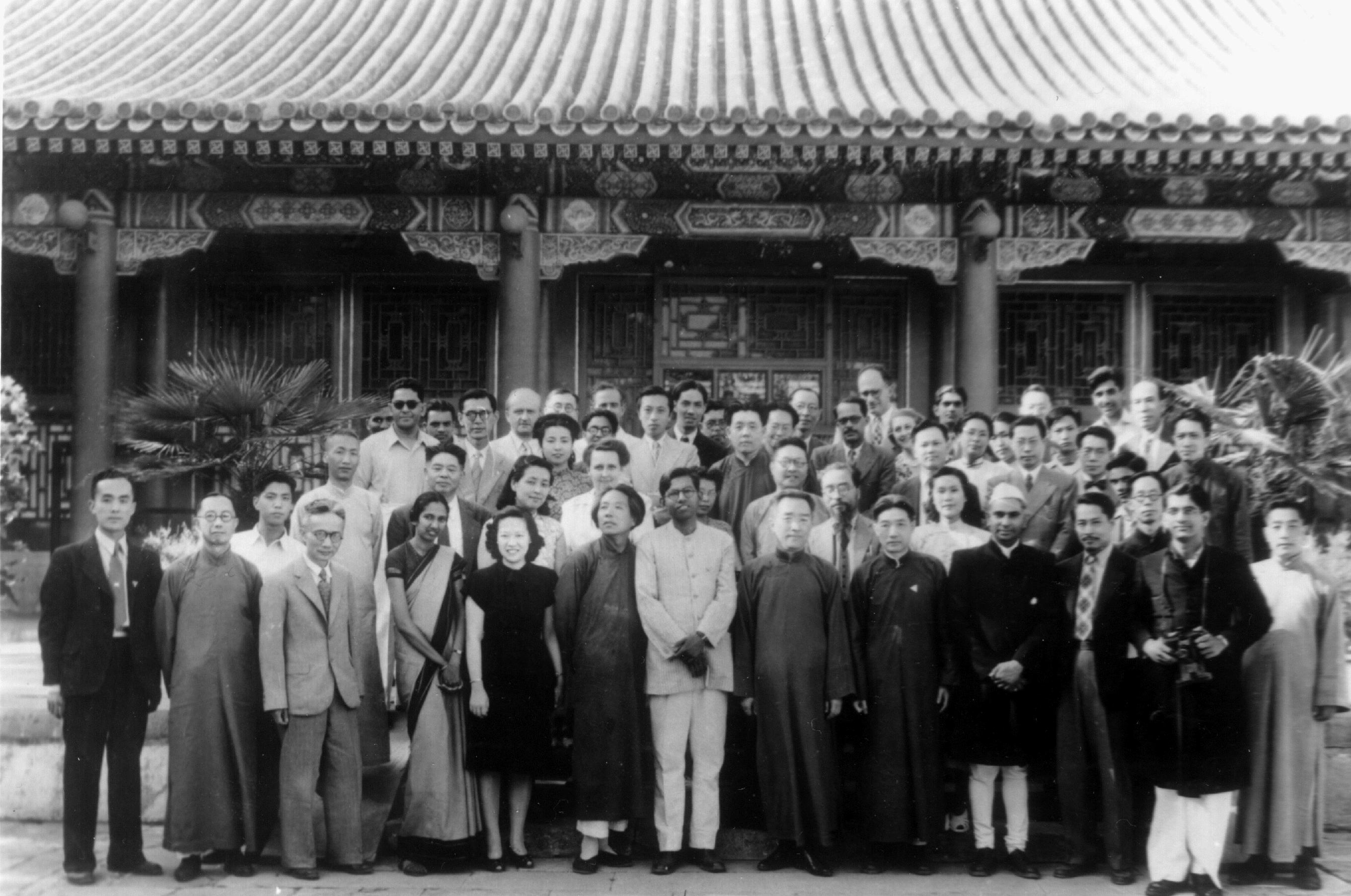To be sacred, it is necessary to accept isolation and loneliness. “The rule for a sacred mountain,” Empson explains, is that “it must be isolated so that people from all round can see the home town.”11 The dialectic of the two fates would be another example of Empsonian paradox: “the opposed ideals of personal immortality and of extinguishing yourself or merging into a world soul.”12 But these ideals are nearly impossible to realize in reality. One must “fly” in order to merge into a “world soul,” and one could only achieve eternity after one’s death. Empson accepted the challenge to understand this radical ambiguity of life, thus transforming the lived loneliness, in the figure of the Sacred Mountain, Nan-Yűeh, into an experience of the emotional and intellectual sublime in wartime China.
Ambiguity and the Politics of Tact
Empson’s critical reputation rests on the development of the concept of “ambiguity” in Seven Types of Ambiguity. Based on his observation of insufficiently studied textual behaviour, Empson defines ambiguity as “any verbal nuance, however slight, which gives room for alternative reactions to the same piece of language.”13 Though primarily concerned with literary language, “ambiguity” is understood and used by Empson in an extended and slightly metaphorical sense. The term is, he explains, “descriptive,” and it suggests “the analytical mode of approach” (Ambiguity 1). The idea of ambiguity espouses no critical principle and proposes no theory about itself, but it presents an inescapable experience of poetry, language, and life as multifaceted, inconsistent, contradictory, and unstable. For “the machinations of ambiguity are among the very roots of poetry” and of social and intellectual life with which Empson was concerned, despite his apparent formalistic tendency (Ambiguity 3). It couldn’t be farther from the truth to subscribe his critical work to the practice of the New Criticism, which Empson once described as a “self-blinding theory,” a “print-centred or tea-tasting outlook,” and an “ugly movement.”14
Never meant to be just a work of literary criticism, therefore, the book is a shrewd and controlled development of the author’s worldview. The classification of ambiguity into seven types allows him to construct a critical nexus and to demonstrate inherent semantic indeterminacies in poetic expression as well as in human experience. There are “social ambiguities” that yield less readily to analysis but throb on the page (Ambiguity 2). As far as Empson is concerned, the need to recognize and accept ambiguity as the essential quality of language and poetry is the only intelligent point of departure for serious intellectual work. Literature is an immense complex of language, as life must necessarily be an experience of radical ambiguities. It would be only honest to recognize and deal with that complex and those ambiguities. Empson’s elaborations, meditations, reflections, amplifications, or seemingly wilful digressions, mingled with interpretative textual examples, are beyond the accepted scope of interpretative responsibilities and established protocols of academic criticism. This is, however, what Empson intended to do. Criticism must break free from the singularity of meaning; “the writer is at root the critic” and should be “at odds with his society, and with official doctrine.”15 Seven Types of Ambiguity is a critical record of the pain and joy in understanding what Empson calls “the logical disorder” inherent in language and life.16 Paradoxes and contradictions characterize life and literature; disorder is a necessary other to life’s order, logic, and end. What Empson seeks to understand is a whole range of possibilities that radical ambiguity would create for the expansion of analytical freedom and interpretive agency.
Life is paradoxical, not just because it is punctuated with endless moments of contradiction and ambiguity, but because it will need to encounter life’s ultimate other: death. Criticism and poetry, the two most important literary genres of self-expression for Empson, offer a unique form in which to engage with life’s other: death, and the fear of death, which is constitutive of the knowledge and experience of life itself. At the time he was working on the book, Empson was an undergraduate student at Cambridge and had no real connection with China. Nevertheless, his employment of the Chinese sources in the book offers an interesting example of Empsonian ambiguity that would reveal the classical Chinese poetic view on life and death. Quoting Arthur Waley’s translation of the fifth century poet Tao Qian, Empson ruminates on the paradox of the two human scales of time measurement:
Swiftly the years, beyond recall.
Solemn the stillness of this spring morning.
The observation of the ambiguity revealed in these two lines: the rapid receding and disappearing of a life-long span and the permanence of “a spot of time,”17 radiates into a set of reflections on the dialectic of life and death:
The repose and self-command given by the use of the first are contrasted with the speed at which it shows the years to be passing from you, and therefore with the fear of death; the fever and multiplicity of life, as known by the use of the second, are contrasted with the calm of the external space of which it gives consciousness, with the absolute or extra-temporal value attached to the brief moments of self-knowledge with which it is concerned, and with a sense of security in that it makes death so far off. (Ambiguity 24)
These musings triggered off by the two lines from Waley’s translation of the Chinese poem are not just a textual commentary; they are, as Roger Sale notes, a critique of “the whole dramatic idea of life” in Western literature that “[w]hen life must be seen from a peaceable and fatalistic point of view it is not dramatic.”18 Again, Empson misquotes the Waley translation of the poem: “fair morning” in the original is silently transformed into “spring morning.”19 But this would be another example of“intelligent and illuminating”20 misquotation that enables interpretation to foray into a moment of splendid optimism to overcome the fear of death:
Contradictory as they stand, critics almost must conceive them in different ways; we are enabled, therefore, to meet the open skies with an answering stability of self-knowledge; to meet the brevity of human life with an ironical sense that it is morning and springtime, that there is a whole summer before winter, a whole day before night. (Ambiguity 24)
Despite that unavoidable eventuality of human life, there is a whole summer we can, and should, enjoy before winter. Such insistence on the contradictions of life and their value for an understanding and interpretation of the mysteries of life and inevitability of death would be an effective method of self-protection, for “life involves,” says Empson, “maintaining oneself between contradictions that can’t be solved by analysis.”21 Developed in terms of inescapable contradiction, opposition, and inconsistency, therefore, the conceptualization of ambiguity presents a distillation of Empson’s philosophy about the predicament of life, or rather life as predicament. Seven Types of Ambiguity, in documenting literary and historical responses to various types of ambiguity, may thus be appropriately considered to be a book about the history of human efforts to understand irresolvable contradictions in language and life.22 John Haffenden draws attention to a constellation of keywords in Empson’s writing that have shaped and defined his critical language: “clash, conflict, contradiction, subplot, outsider, scapegoat, resistance, hidden, secret, dissent, isolation.” These keywords begin to outline a critical history of digression, disruption, non-conformity, resistance, and “flight” which Empson narrates through a rich array of poetic examples in the book.
In the Preface to the second edition of Seven Types of Ambiguity, Empson spells out his intention in writing the book thus: “My attitude in writing it was that an honest man erected the ignoring of ‘tact’ into a point of honour” (Ambiguity vii). In this admission of the critical impulse to reject academic tact, Empson defines the book in terms of its intended challenge to some of the most commonly held critical positions in the academy. The book, therefore, is an attack on different types of authority: sanctified and fetishized literary meaning and academic masters. His refusal to accept tact in the practice of criticism is considered to be a distinctive mark of the Empsonian style of articulation.23 Empson could be difficult or even rude especially when “argufying,” a word he used to describe the mode of engagement he preferred,24 but, as Paul A. Bové reminds us, in discussion of Empson’s critical practice, there is the need to understand “what it was about Empson that made him intolerant and sometimes intolerable.”25
The practice of tact is already a social irony, a situational paradox. Representing what is lost, missing, or fragmented, tact, Adorno says, “lives on only parody of forms,” and it is “an arbitrarily devised or recollected etiquette for the ignorant.” It is, he continues, a modern invention and a bourgeois norm:
For tact, we know now, has its precise historical hour. It was the hour when the bourgeois individual rid himself of absolutist compulsion. Free and solitary, he answers for himself, while the forms of hierarchical respect and consideration developed by absolutism, divested of their economic basis and their menacing power, are still just sufficiently present to make living together within privileged groups bearable.26
As a modern social ethic, tact at once serves the bourgeois notion of individualism and destabilizes that individualism by its discrimination and exclusion of the different. In proposing a new social order in place of that of absolutism, it “mimicked traditional courtesy, manners – modes of honouring others – without formalism,”27 and as such it continued its regulatory authority in governing local relationships. In academic criticism, tact – what a communal majority considered and accepted to be good manners of speaking, writing, and thinking – quickly becomes a substitute for genuine human relationship, social or intellectual. “[A] certain kind of politeness,” notes Adorno, “gives [individuals] less the feeling of being addressed as human beings, than an inkling of their inhuman conditions.”28 But the abolition of tact would make “existence” “still more unbearable;” and the necessity of tact shows only “how impossible [existence] has become for people to co-exist under present conditions.”29
Empson dislikes tact. Good manners are, he claims in Some Versions of Pastoral, “an absurd confession of human limitations.”30 In a brisk analytical leap, Empson makes a significant connection between tact and snobbery. Like tact, literary snobbery is an expression of the common and standard; in the context of social relations, it’s an attitude taken to hide human limitations. Empson cites Aldous Huxley who has written substantially about “snob interest” in literature and art. The common form of academic snobbery that Huxley singles out is the dilettantish exhibition of literary knowledge – “that delicious thing old Uncle Virgil said, you remember” – and “puzzle interest” as a branch of “snob interest.” Literary snobbery of this kind, Empson notes, is the product of the historical practice of “general knowledge” required for an educated person. One consequence of specialization of criticism is the rapid reduction of “the field of ‘general knowledge’ that old Uncle Virgil used to inhabit, because there are now more interesting things to know than anybody (or any poet) knows. There is no longer therefore a justification for snob treatment of them.”31 Huxley provides a catalogue of common literary snobberies, including “hostesses [hunting] literary lions” and “enriched button manufacturers … [collecting] pictures and first editions.”32 The pervasiveness of such literary snobbery, which is part of general social snobbery, replenishes the academic profession of literature with snobs. “It is the snobbery which renders it absolutely necessary for a large class of people to have read all the latest books…, to have seen the latest exhibitions and plays, heard the latest music.” In essence, “snobbery is a tribute paid by inferiority to superiority…. In the world of the spirit, snobbery is the tribute which philistinism pays to art, ignorance to learning, and stupidity to talent.”33
It begins to make sense that Seven Types of Ambiguity takes pride in its contempt for the practice of tact in the academy. For much of the first half of the twentieth century, the study of “Eng. Lit.,” especially at his alma mater, the University of Cambridge, was in effect the study and practice of Eng. Lit. Crit.34 Nothing would be more damaging to the vital force of criticism than its total institutionalization, which would entail not only expert knowledge, but also prejudice and snobbery, protected by what Empson has contemptuously called “the Lit. Crit. Establishment.”35 To reduce criticism to a routinized procedure or to ascribe it to an understanding of literary studies as a privileged site of professional exhibition and performance is to alienate it from its historical soil and social intention. Nothing is more important than the acceptance of criticism’s main task: to engage with what truly matters in literature and life. Looking back at his work in 1978, Empson could be reasonably satisfied with his practice of that understanding of the function of criticism. Since his undergraduate work on ambiguity, he had not “even felt a change in [his] line of interest” and “continued to try to handle the most important work that came to hand.”36
It’s perhaps easier to write against tact and forms of vulgarity by setting a distance between oneself and the institutional establishment. In China, outside that establishment of “Eng. Lit.,” Empson seemed to have had a positional advantage in thinking and writing about the academic profession of literary criticism. He could easily ignore“the sound of contended munching from a field of academic critics, and the perpetual swish-swish of their white-wash brush.”37 This is probably why Empson would find it hard to adjust to the academic life of Britain after his extended stay in China. He noted the revival of Christianity in the academy to which he was to respond with Milton’s God.38 He would have to “attend to the opinion in Eng. Lit. Crit., if only because of its effects upon the students,”39 and he was unable to persuade his colleagues that critical work required no standardization of writing and thinking. He began his famous essay “Volpone” (1968) with these remarks:
A good deal of standardization of opinion and critical method became necessary when Eng. Lit. became a large profession, and I think the results are often mistaken; but it is naturally hard to make my colleagues agree with any such judgment.40
Academic parochialism, reinforced by the insistence on the unquestioned sense of disciplinary identity, adoption of received methodology, and compliance with professional tact must be rejected before criticism could become a meaningful exercise of mind and an act of public intervention. Beginning his university education as a student of mathematics, Empson developed a special interest in the impact of new scientific discoveries on literature and in “the world-picture of the scientists” he believed the poet had much to learn from. Disciplinary formations in the literary studies blinded many to the creativity of the scientific world. “I have always found the worldpicture of the scientists much more stimulating and useable than that of any ‘literary influence,’” Empson said to a Chinese colleague. In this admission of literature’s limitations, there was a quiet turning-away from the kind of academic politics that had reduced critical thinking to snobbery: “it seems to me trivial to say that scientific thought isn’t real thought; it only suggests a quarrel between different faculties in a university about which should get more money and better buildings.”41
Empson’s intellectual idiosyncrasy constituted a professional anomaly. His critics have accused him of being unprofessional in his critical approach and mode of expression, in his carelessness in the use of sources and references. Yet, he “flew” to a place where such professionalism was not only practically impossible, but also quite absurd. Empson enjoyed himself in the convenience of finding regulations, critical schemas, or academic tact inconvenient. To quote from memory, for instance, was an organic act of writing, and “this idea of checking your quotations as an absolute duty,” writes Empson, “is fairly recent, and not always relevant.” He invokes the example of Hazlitt “who habitually quoted from memory, and commonly a bit wrong, but he was writing very good criticism.”42 There had been Coleridge before Hazlitt who had been criticized for non-identification of German sources and references he cited and used liberally.43 His defense of misquotation was manifestly not so much about intellectual integrity or honesty as about what position one should take in face of the disabling effect of professionalization and standardization in thinking and writing.
Community of sympathy
To ignore academic protocols would be Empson’s statement on the function of criticism as a committed form of engagement with ambiguities in literature and life. Physical immobility, like linguistic non-ambiguity, reflects a state of intellectual status quoism. Empson’s choice of escape was consistent with such forms of resistance as Charles Baudelaire’s dandyism and Victor Segalen’s exoticism. Harootunian notes the similarities between these apparently unrelated responses to a common aesthetic and poetic enemy. Dandyism, Baudelaire contends, is the “best element in human pride” and an effective weapon in “combat[ing] and destroy[ing] triviality” “in the struggle with a social conformism that threatened to install homogeneity everywhere that industrial capitalism has established its regime in the nineteenth century.” 44 And Segalen viewed exoticism “as the candidate best suited to protect contemporary life from the relentless banality wrought by the transformation of capitalism into mass-society imperialism and colonialism.”45 Two decades before Empson took up his teaching position in China, Segalen had lived in China for an extended period of time, from 1909 to 1914, and again in 1917. Empson and Segalen might have gone to China for different reasons, but for each the country offered the possibilities of self-renewal and liberation from the banalities of “an everyday life landlocked in repetitive routine.”46
One may hope to live a “self-centred emotional life imposed by the detached intelligence””47 through a voluntary relinquishing of one’s formative society. Satire, cynicism, or political activism were not Empson’s measures of self-help and self-protection. He could not accept “the comforts of Christianity accepted by T.S. Eliot, or later by Auden and preferred “the special loneliness of the atheistic rationalist who places no particular trust even in the mind.”48 Virtue and intelligence, two qualities essential for honest and meaningful critical work, “are alike lonely,”49 rare, and unaccepted. Escape was both reaction and action: “‘Thank God I left’” (“Nan-Yűeh,” 60). Empson’s allusion to Peter Walsh in Virginia Woolf’s Mrs. Dalloway (1925) is a textual act of self-affirmation. Walsh departed for India, leaving behind his formative society with all its trivialities: “the snobbery, stuffiness and gossip of little England.”50
I felt I had escaped from They
Who sat on pedestals and fussed. (“Nan-Yűeh,” 21-22)
Empson understood and sympathized with this feeling of relief. China for him, like British India for Peter Walsh, provided the opportunity to reject the metropolitan life. Empson’s political commitment was non-commitment, and his political involvement was the choice of disengagement. Once he had decided to leave, his emotional relief was palpable. Appropriately about flight, escape, courage, and commitment, “The Autumn on Nan-Yűeh” records the joy derived from the sense of liberation and freedom in its “relaxed and conversational phrases of his later style” and in its “unhurried comment on his thoughts and experiences in wartime China.”51
Before he decided to work and live in China, Empson knew only that he “should want to get away from the English.”52 I. A. Richards, who had already been in China since the late 1920s, inspired Empson. In January 1931, Empson wrote to Richards: “I want to travel, and, as you see, it is now fixed in my mind that I want to go to China.”53 In the 1930s, serious graduates of literature considered it a rewarding job to teach English, and an attractive alternative to unimaginative office work, not just because “jobs are rare,” but because teaching provided the young minds the possibilities of continuing to be “Clever young men of liberal opinions.”54
What was awaiting Empson in China in the autumn of 1937, however, was a massive evacuation of the universities from Beijing to the country’s inland for shelter from Japanese brutalities. He joined the faculty of Peking National University in Changsha, Hunan Province in central China, which, together with Tsinghua and Nankai Universities, had just formed the wartime Temporary University, which would move to Kunming, Yunnan Province and be renamed the National Southwest Associated Universities, abbreviated in Chinese as Lianda. The nine-year history of Lianda spanned the entire period of the Resistance War (1937–1945). In Hunan, the Faculty of Arts of the Temporary University was housed in a missionary school on the Nan-Yűeh Mountain and stayed there for one semester from November 1937 to February 1938. Empson had escaped England only to run again from the immediate dangers of the war in China.
The journey from Changsha to Kunming was a heroic odyssey. In his Lianda: A Chinese University in War and Revolution, John Israel wrote: “The official overland distance …was 1,033.7 miles (1,663.6 kilometers), of which more than 800 miles were covered on foot, an average in excess of twenty miles a day for forty days of walking. Much of the trek was over rugged terrain in bad weather.”55 It was an epic journey many Lianda faculty members and students remembered, perhaps not without nostalgia, as an enduring modern academic romance. Those who participated in the long march were acutely aware of its historical significance, and started to circulate their memoirs as soon as the journey was completed.56 Empson, too, realized the historical significance of this remarkable experience and produced a sizeable amount of writings about it. “Autumn on Nan-Yűeh” is a poetic memoir of his reflections on life and literature, politics and war, fear and loneliness, courage and heroism during his time of teaching in China. His short essay “Chinese Bandits” (1938-39) records the danger, and excitement, in his encountering with the bandits who remained active and operative in the mountainous recesses outside Mengzi, Kunming.57 “A Chinese University” (1940) pays tribute to Lianda as a symbol of courage, confidence, and optimism in enduring and confronting the brutality and barbarism of Japanese aggression. This experience of teaching in China would become the centerpiece of his inaugural speech “Teaching English in the Far East” at the University of Sheffield.58
In the midst of the war, with unstable student populations, limited supplies of classroom materials, and Japanese air raids, academic work could not remain normal; teaching and learning had to be practiced differently. Teachers had to invent syllabus materials as they went along; sometimes they taught classes without textbooks. But teaching never stopped: “The lectures went on sturdily from memory.”59 Some of Empson’s Chinese colleagues found it hard to teach from memory, but Empson enjoyed it. legendary and has become part of the history of Lianda:
The abandoned libraries entomb
What all the lectures still go through,
And men get curiously non-plussed
Searching the memory for a clue.
……
Remembering prose is quite a trouble
His phenomenal memory was
But of Mrs. Woolf one tatter
Many years have failed to smother.
As a piece of classroom patter
It would not repay me double.
Empire-builder reads the yatter
In one monthly, then another. (“Nan-Yűeh,” 43 – 59)
Empson taught English literature and later a course on modern English poetry at Lianda. Teaching was meaningful and rewarding and became part of life:
The proper Pegasi to groom
Are those your mind is willing to. (“Nan-Yűeh,” 49–50).
Poetry must be experimented and experienced, and it began to develop an organic link with the realities of life: “We teach a poem as it grew” (“Nan-Yűeh,” 52). The young minds, too, grew with the growth of poetry. Empson’s influence on his Chinese students was immense, especially on those young poetic minds who were to become the first generation of modernist poets in China, including, notably, Mu Dan (1918–1977).60 Many of them were to recall emotionally those exciting and happy days with their poet-teacher Empson at Lianda.61
Empson was admired by his Chinese students as an “abstract” and “modernist” poet, but he had a special understanding of himself as a poet.62 Poetry is not life’s decoration, nor is it a means of intellectual narcissism and self-indulgence; it is a procedure through which to develop self-knowledge and to strengthen and solidify emotional life.63 Poetry is insincere unless it’s capable of resolving the conflicts in the poet and thus preventing him or her from sinking into total despair and irremediable insanity.64 Poetry, in other words, becomes a laboratory for the development of self-knowledge, and like Empson’s critical writing, it should ideally capture, understand, and interpret life’s ambiguities. Some of his best poems are “complicated in the way that life really is.”65 In face of the immense complexities and radical ambiguities of life, especially when poetry proves inadequate for the lived feelings of loneliness, waste, and loss during the time of war, one could only become poetic by stopping writing poetry. Starting to see other possibilities that life might offer, Empson was keen on exploring his intellectual life in different spheres of experience. In a letter to I. A. Richards in early 1933, Empson wrote: “I am stopping trying to do literary work; it seems too hollow for some reason.”66 His poem “Let It Go” (1949) is “about stopping writing poetry”:
It is this deep blankness is the real thing strange.
The more things happen to you the more you can’t
Tell or remember even what they were.
The contradictions cover such a range.
The talk would talk and go so far aslant.
You don’t want madhouse and the whole thing there.67
If this is partly about his decision to write no more poetry, we must understand that the dangers of the “madhouse and the whole thing there” lie in the direction of poetry, and writing more poetry might lead to things going “so far aslant.”68
The mode of teaching and the physical environment on Nan-Yűeh suited Empson’s temperament. Teaching at Lianda at the time of war could not possibly be a model of professionalized and specialized literary studies. In a community of scholars and students like Lianda, tact would be out of place, and teaching could not be the performance of a professional task, a repetition of “[t]hat pernicious hubble-bubble,” or “classroom patter” which dominated, and continues to dominate, the academic platform of “Eng. Lit.” There would be no condition to standardize teaching at Lianda; teaching was literally fieldwork carried out away from the institutionalized space of academy, on the mountains and later in the rural area of Kunming. It was a profoundly personal experience.
Empson reported that his time at Lianda was a period of remarkable intellectual fecundity, productivity, and creativity, despite, or rather because of, the difficult circumstances. The perils of war and shortage of daily supplies, for example, imposed on Empson and his colleagues an extraordinary sense of responsibility, and at the same time helped to create a community of sympathy that would render the profession of teaching and practice of literature purposeful and rewarding. The refugee universities, Empson says, “really are universities,” and Lianda was “not a bad place for an inquisitive mind to live.”69 During this period of exile, Empson was working with an exceptional array of minds engaged in writing some of their most important works. On Nan-Yűeh, Empson began The Structure of Complex Words; Jin Yűe Lin completed his seminal book On the Tao; Tang Yongtong drafted the first part of the History of Chinese Buddhism; and Feng Youlan (Fung Yu-Lan) finished Neo-Confucianism (Xin lixue).70 “Those few months at Nan-Yűeh,” recalls Feng, “were the most intellectual. We devoted all of our daytime to writing, except the time for teaching and eating. … We might seem to be detached from the national calamity and have hidden in our ivory tower. But this is so only because we didn’t know how to express and let out our anger and grief, and we had to concentrate on our work.”71 Many of Empson’s colleagues were educated in Europe and the US and returned to serve, defend, or reform their country. Just as they were “intellectually cosmopolitans and politically nationalists,” they, like Empson, were perhaps all “elitists.”72 “I felt I was in very good company,” Empson recalls.73 Empson’s life with the refugee universities, first on Nan-Yűeh and then in Mengzi, Kunming was characterized by confidence, optimism, and gaiety, and these sentiments, vividly manifest in “Autumn on Nan-Yűeh,” define a remarkable community of intellectual sympathy formed and consolidated by a shared sense of commitment, a community that was bound by “a noble heritage and common mandate”:74
The souls aren’t lonely now; this room
Beds four and as I write holds two. (“Nan-Yűeh,” 41-2)
Isolated, aloof, and sacred, Nan-Yűeh was the sanctuary of intellectual integrity and a symbol of the intellectual sublime. Empson “would always think of the mountain as his ideal of the academic community.”75 Lianda was where he ended his exile.
If “the idea of solidarity is potentially the real basis of a society” in times of peace,76 the idea of community must be even more firmly grounded in the development of solidarity in times of war. Empson endured the hardships of the journey across the rough terrains with Lianda and survived the perils of war. His students and colleagues respected him because of his unwavering dedication to his work in China and his solidarity with colleagues and students in defiance of aggression and oppression. This is perhaps where Empson differed from his mentor Richards. The difference between them lies in their practice of criticism and in their understanding of intellectual commitment and communal solidarity at the time of war and hardship. While China, for Empson, was a place of exile and serious intellectual work, it was, for Richards, a site of linguistic experiment with Basic English. Empson considered Richards’s departure for the U.S. at the outbreak of the war as an act of betrayal, and he would not forgive Richards for deserting not only his Chinese friends but also his project of Basic English in China, which he had promoted with evangelical zeal before the Sino-Japanese war. “You had let the Chinese down,” he told Richards bluntly.77 Empson was especially contemptuous of those orientalist Westerners, those “beastly little Lovers of the Far East,” who thought it “dignified to be in China,” but “have slunk off leaving only man namely me” in China.78
“Chinese Ballad”: Love and Continuity
In 1952 when he was about to leave China for his position at the University of Sheffield, Empson published his last poetic work “Chinese Ballad.” In his Inaugural speech at Sheffield, Empson used his experience of teaching in wartime China in the 1930s to outline his understanding of intellectual work and teaching. His experience of China contributed substantially to his understanding of the use and value of literature and of the role of the critical intellectual. “Chinese Ballad” is a poetic fragment extracted from a long revolutionary narrative poem by the Communist poet Li Ji (Li Chi), Wang Gui and Li Xiangxiang (Hsiang- Hsiang) (1946). Empson made an effort to be close to the original in translating the poem into English. He says: “The translation is word for word, so far as I can know from simply being given the meanings of the characters.”79 Of course, the “translation” of the Chinese poem had to be in the tradition of Ezra Pound – Empson had little Chinese.
The poem depicts the pathos of two lovers who must part each other by the imperatives of the revolutionary task. Setting off to the frontline fighting the Japanese, Wang Gui encounters a rare moment of tender love and restrained emotional torrent with his lover Hsiang-Hsiang, who could not imagine herself being separate from her soldier-lover. Standing by the stream in the valley, where they must bid final farewell to each other, Hsiang-Hsiang points at the “deep” and “thick” mud beneath their feet and beseeches Wang Gui to perform an extraordinary symbolic act of human union:
Make me two models out of this,
That clutches as it yearns.
Make one of me and one of you,
And both shall be alive.
Were there no magic in the dolls
The children could not thrive.
When you have made them smash them back:
They yet shall live again.
Again make dolls of you and me
But mix them grain by grain.
So your flesh shall be part of mine
And part of mine be yours.
Brother and sister we shall be
Whose unity endures.80
The poem records the emotional turbulence characterizing love in the time of war and the poignancy of the need for self-sacrifice. What is moving about the poem is its “respect for courage and for decision,”81 its understanding of the need to accept the conditions of the present, and its optimistic longing for an imagined future of reunion. The poem rehearses the Empsonian question about life as an experience of possibilities and impossibilities. At the heart of the poem lies the symbol of a more radical paradox of the desire for physical inseparability and the pathos that follows the realization of its impossibility. In the process of creating the doll-couple, Hsiang-Hsiang performs a symbolic marriage and thereby expresses her unreserved love for her soldier-lover, which is disrupted by the painful realization of the need to part. The poem’s internal rhymes and repetitions create the effect that “the lines seem to circle around themselves in a way that eerily suggests their futility.”82 The utopian quality of human love is vividly figured in the fusion of the dolls, an image which reminds one of what Roland Barthes calls “engulfment” as love’s necessary illusion: “we die together: an open death, by dilution into the either, a closed death of the shared grave.”83
The final stanza of the poem crystallizes Hsiang-Hsiang’s difficulties to come to terms with the necessity of her lover’s departure for the frontline:
Always the sister doll will cry,
Made in these careful ways,
Cry on and on, Come back to me,
Come back, in a few days.
These lines are not in the original; they are Empson’s addition.84 With this poetic coda, the “fullness of the poem’s respect for what it contemplates,” says Christopher Ricks, “is achieved because the subject so fully reconciles so much in Empson’s thinking and feeling.”85
As much attracted to the poem’s celebration of love, Empson was intrigued by its balladic form, which, he notes, “had been used in classical style.”86 The poetic fragment is intertextually derived from a poem by the thirteenth-century woman poet Guan Daosheng (1262–1319), who made this poetic effort to hold back her husband’s departing passion. Li Ji’s ballad successfully “transposed or restored” the classical theme “into popular style.”87 The original is richly suggestive of a total physical union and a willingness to renounce the self for the achievement of that union. In Li Ji’s appropriation of the classical poem, the implied sexuality of love is transformed, enlarged, and elevated into a political form of human relationship in the revolutionary class of peasant-soldiers, and a shared idealism, as embodied by the Chinese Communist Party’s wartime capital Yan’an, which looms large in the background of Li Ji’s poetic narrative.
It’s difficult to ascertain whether Empson was fully aware of the political implications of the poem, and I’m not aware of any personal relationship between Li Ji and Empson. But it was perhaps unnecessary for him to know Li Ji or that much about the poem. If there is anything in common between them, it is this understanding of literature as organically connected with life and reality. Empson’s sympathy with the Chinese revolution is well known. His decision to stay on teaching in Peking after the Communist victory in 1949 was evidence of his solidarity with this new nation. On October 1, 1949, Empson witnessed the founding of the PRC in Peking. He was moved by the spectacle of the military parade and civilian processions, which he described as a symbolic act of people’s will:
I did not expect to be more than bored, but found myself extremely moved almost at once. You may believe that what is being celebrated will turn out a delusion, but history is full of gloomy afterthoughts. Here you have celebrated victory of revolt against tyrants, supported by the countryside alone, practically their bare hands, against a government drawing on the full terrors of modern equipment with medieval or fascist police methods into the bargain. If anything in history is impressive you are bound to feel that is.88
Unlike his wife Hetta, who accompanied him throughout the period of his appointment at Peking, Empson was not formally a member of the British Communist Party. His leftist political sympathy was not just a political ideology, but also a critical and aesthetic response to the realities in China that fell far short of the minimum standard of human decency. Prior to his translation of “Chinese Ballad,” his sympathy with the Chinese revolution had already shown itself in his special interest in Chinese revolutionary art.
In late 1948, Empson went to see the performance of the “Yellow River Cantata” on the campus of Peking University. The Cantata, composed by the French-educated artist Xian Xinghai who traveled to Yan’an in 1938, the same year as Li Ji did, was thematically related to Wang Gui and Li Xiangxiang. Its performance at the Square of Democracy of the University was “a bold step,” because, Empson explains, it “was forbidden in Chiang Kai- shek’s Peking, and could only happen within the barbed wire”:
[The Cantata] is about guerilla resistance to the Japanese in North China, using a lot of indigenous folk-tunes, and using Western instruments. The peasant singing is faintly like Russian singing, and very unlike the strained voice of the Chinese ruling- class music, popular in the cities through opera. Basing the revolution on the peasants thus gave a fair case for letting in European techniques; but even so the Cantata … always keeps voice and orchestra separate…. I thought it hauntingly beautiful, all the more in the late dusk in the great square with a tense audience waiting for the liberation of the city.89
Empson’s sympathy with the CCP’s revolutionary literature is both political and aesthetic. He was drawn to the egalitarian harmony and organic love in “Chinese Ballad”; for the poem, or the translation of it, was “an assurance that though life may be essentially inadequate to the human spirit, the human spirit is essentially adequate to life.”90 The poem’s “simple dignity, clear-sighted and touching,” and its “particular kind of conclusive triumph,” which is realized in love, serve as a suitable poetic conclusion to Empson’s reflections on ambiguity as the condition of life.91
From his first book on ambiguity to his last poetic composition “Chinese Ballad,” there seems to be a consistent pattern in Empson’s thinking and writing. The concept of ambiguity recognizes the potentialities of diversity and multiplicity in language and the value of literature as knowledge of possibilities and impossibilities in life, and in practice, it makes possible a democratic form of criticism in analysis and interpretation. Empson’s decision to teach in China was a choice of disengagement from things and people he had decided not to engage at home. Escape is not exactly a struggle against a specific government policy, a particular ideology, a political authority, or even an identifiable external object, but neither is it non- action, passivity, or non-resistance. One has to be outside one’s formative society in order to be a critic of it. Empson’s “Sacred Mountain,” intended to be a substitute for his formative society, may well be an idealized community in which he was able to imagine a new type of human relationship and “interpersonal fusion in love”92 against alienation, pessimism, and despair.
1. Raymond Williams, Culture and Society: 1780 – 1950 (Harmondsworth: Penguin, 1963), 304. Back to essay
2. Ernst Bloch, The Principle of Hope, trans. Neville Plaice, Stephen Plaice and Paul Knight (Cambridge, Mass.: The MIT Press, 1996), vol. i, 368, 370. Back to essay
3. William Empson, “Volpone,” in Essays on Renaissance Literature, ed. John Haffenden (Cambridge: Cambridge UP, 1994), v. 2, 72. Back to essay
4. Biographical and critical studies of Empson are copious. John Haffenden’s William Empson: Among the Mandarins and William Empson: Against the Christians (Oxford: Oxford UP, 2005) are indispensable biographical studies of Empson. Critical studies which have particularly helped me in thinking about the significance of Empson’s work in China include: Paul A. Bové, Poetry against Torture: Criticism, History, and the Human (Hong Kong: Hong Kong University Press, 2008), Paul H. Frye, William Empson: Prophet against Sacrifice (London: Routledge, 1991), Christopher Norris, William Empson and the Philosophy of Literary Criticism (London: Athlone Press, 1978). Critical Essays on William Empson, edited by John Constable (Aldershot, Hants: Scolar Press, 1993), is a useful collection of critical essays and reviews of Empson’s works. Back to essay
5. This is the title of a poem by Empson published in 1936: “Courage Means Running,” collected in William Empson, The Complete Poems, edited with Introduction and Notes by John Haffenden (London: Penguin Press, 2000). Back to essay
6. William Empson, “Autumn on Nan‐Yűeh,” in The Complete Poems, 91. Hereafter this work is cited parenthetically as “Nan‐ Yűeh.” Back to essay
7. Empson, Note to “Autumn on Nan‐ Yűeh,” The Complete Poems, 380. Back to essay
8. William Empson, Some Versions of Pastoral (London: The Hogarth Press, 1986), 114‐5. Back to essay
9. W. B. Yeats’s “The Phase of the Moon” reads:
The soul remembering its loneliness
Shudders in many cradles; all is changed,
….
Dutiful husband, honest wife by turn,
Cradle upon cradle, and all in flight and all
Deformed, because there is no deformity
But saves us from a dream. (88‐102)
W.B. Yeats, The Poems, ed. Richard J. Finneran (London: Macmillan, 1983), 165‐6. Back to essay
10. Empson notes:
Nan‐yueh is a sacred mountain about seventy miles southwest of Changsha; the Arts Departments of the Combined Universities were housed on it for a term in 1937, and then we moved further back to Yunnan.
Empson, Note to “Autumn on Nan‐Yűeh,” The Complete Poems, 379.
Back to essay
11. John Haffenden, William Empson: Among the Mandarins (Oxford: OUP, 2005), 456. Back to essay
12. Empson, Note to “Autumn on Nan‐Yűeh,” The Complete Poems, 379. Back to essay
13. William Empson, Seven Types of Ambiguity (London: The Hogarth Press, 1953), 1; hereafter this work is cited parenthetically as Ambiguity. Back to essay
14. William Empson, Letter to Philip Hobsbaum, 2 August 1969, Selected Letters of William Empson, ed. John Haffenden (Oxford: Oxford UP, 2006), 477, 481, 480. For Empson, the acceptance of intention is the beginning of responsible criticism, and “the effects of renouncing it … produces dirty nonsense all the time, with a sort of tireless unconscious inventiveness for new kinds of nonsense.” Empson, Letter to Philip Hobsbaum, 2 August 1969, Selected Letters of William Empson, 477. Back to essay
15. Haffenden, William Empson: Among the Mandarins, i, 5. Back to essay
16. The seven types of ambiguity, Empson explains, are “intended as stages of advancing logical disorder” (Ambiguity 48). For a reading of the ambiguity of this formulation, see Paul H. Fry, Chapter 3, “Advancing Logical Disorder: Empson on Method,” William Empson: Prophet Against Sacrifice (London: Routledge, 1991). Back to essay
17. William Wordsworth, The Prelude or Growth of a Poet’s Mind (1805), ed. Ernest de Selincourt (Oxford, OUP, 1970), xi:258, 213. Back to essay
18. Roger Sale, Modern Heroism: Essays on D.H. Lawrence, William Empson, and J.R.R Tolkien (Berkeley, University of California Press, 1973), 122. Back to essay
19. The poem by Tao Qian, in the Waley translation, is as follows:
Swiftly the years, beyond recall.
Solemn the stillness of this fair morning.
I will clothe myself in spring‐clothing
And visit the slopes of the Eastern Hill.
By the mountain‐stream a mist hovers,
Hovers a moment, then scatters.
There comes a wind blowing from the south
That brushes the fields of new corn.
Tao Qian (372‐427), “New Corn.”
A Hundred and Seventy Chinese Poems, trans. Arthur Waley (New York: Alfred A. Knopf, 1919), 116. Back to essay
20. These are Empson’s words for a misprint that occurred in the eleventh edition of Philip Sidney’s “You Gote‐heard Gods” that the original “morning” is replaced with “mourning”:
At whose approach the sun rose in the evening,
Who where she went bore in her forehead mourning,
Is gone, is gone, from these our spoiled forests,
Turning to deserts our best pastor’d mountains.
See Seven Types of Ambiguity, 38. Back to essay
21. Empson, Note to “Bacchus,” The Complete Poems, 290. Back to essay
22. See Sale, Modern Heroism, 117. Back to essay
23. Matthew Creasy, “Empson’s Tact,” in Some Versions of Empson, ed. Matthew Bevis (Oxford: Clarendon). Back to essay
24. Empson explains his use of the word thus: “Argufying is the kind of arguing we do in ordinary life, usually to get our own way; I do not mean nagging by it, but just a not especially dignified sort of arguing. This has always been one of the things people enjoy in poems; and it can be found in every period of English literature.” See William Empson, “Argufying in Poetry,” in Argufying: Essays on Literature and Culture, ed. John Haffendon (London: The Hogarth Press, 1988), 167. Back to essay
25. Paul A. Bové, Poetry against Torture (Hong Kong: University of Hong Kong Press, 2008), 118. Back to essay
26. Theodor Adorno, Minima Moralia: Reflections on a Damaged Life, trans. E.F.N. Jephcott (London: Verso, 2005), 36. Back to essay
27. J. M. Bernstein, Adorno: Disenchantment and Ethics (Cambridge: Cambridge UP, 2001), 64. Back to essay
28. Adorno, Minima Moralia, 37. Back to essay
29. Adorno, Minima Moralia, 37. Back to essay
30. Empson, Some Versions of Pastoral, 293. Back to essay
31. Empson, “Note on Notes”, Empson, The Complete Poems, 113. Back to essay
32. Aldous Huxley, “Snobs,” in Aldous Huxley Annual, vol. 7 (2007), 88. Back to essay
33. Aldous Huxley, “Snobs,” in Aldous Huxley Annual, vol. 7(2007), 87. Back to essay
34. For critical reflections on the academic genealogy of Cambridge English, see Raymond Williams, “Cambridge English, Past and Present” and “Crisis in English Studies,” in Writing in Society (London: Verso, 1991). Back to essay
35. William Empson, “Postscript” to Christopher Norris, William Empson and the Philosophy of Literary Criticism (London: The Athlone Press, 1978), 206. Back to essay
36. Empson, “Postscript” to Norris, William Empson and the Philosophy of Literary Criticism, 205. Back to essay
37. Empson, “Postscript” to Norris, William Empson and the Philosophy of Literary Criticism, 205. Back to essay
38. Empson explains in the book how his experience of teaching at government universities in the Far East made it harder for him to adjust to the revival of Christianity in the British academy: “Having had ten years teaching in Japan and China, and having been interested only in propaganda during the war, halfway through them, I am still rather ill‐adjusted to the change of atmosphere. Lecturing at the Government universities in the Far East, which means firmly non‐missionary ones, was not likely to prepare me for it; I gathered that those of my students who became interested in Paradise Lost, though too polite to express their opinion to me quite directly, thought ‘Well, if they worship such a monstrously wicked God as all that, no wonder that they themselves are so monstrously wicked as we have traditionally found them.’” Empson, Milton’s God (Cambridge: Cambridge UP, 1981), 10. Back to essay
39. Empson, “Postscript” to Norris, William Empson and the Philosophy of Literary Criticism, 205 – 6. Back to essay
40. Empson, “Volpone,” Essays on Renaissance Literature, v. 2, 66. Back to essay
41. Empson, Letter to Chien Hsueh‐hsi, 7 September 1947, Selected Letters of William Empson, ed. John Haffenden (Oxford: OUP, 2006), 151. Back to essay
42. See John Constable, “Preface,” Critical Essays on William Empson, ed. John Constable (Aldershot: Scolar Press, 1993), 4. Back to essay
43. Coleridge considered plagiarism to be “intentional imitation.” Simple similarities between authors should not be held as proof of plagiarism, and true plagiarism did not typically show itself in textual parallelism, but was often covered by textual dissimilitude. Referring to an unidentified volume of poetry “completely made up of gross plagiarisms from Akenside, Thomson, Bowles, Southey, and Lyrical Ballads,” Coleridge noted a range of “artifices” the poet employed to “disguise the theft, – transpositions, dilutions, substitutions of synonyms, etc. etc. – and yet not the least resemblance to any one of the poets whom he pillaged.” An “intentional plagiarist,” wrote Coleridge, “would have translated, not transcribed.” What was important for Coleridge was whether or not the mind in the text was (or intended to be) original. Coleridge called for the need to judge by “the original spirit.” Samuel Taylor Coleridge, A Letter on Plagiarism (December 15, 1811), in Shakespearean Criticism, ed. T. M. Raysor (London: Dent, 1960), vol. 2, 184 – 191. Back to essay
44. Harry Harootunian, “The Exotics of Nowhere,” Foreword to Victor Segalen, Essay on Exoticism: An Aesthetics of Diversity, trans. Yaël Rachel Schlick (Durham and London: Duke UP, 2002), vii. Back to essay
45. Harootunian, “The Exotics of Nowhere,” vii. Back to essay
46. Harootunian, “The Exotics of Nowhere,” viii. Back to essay
47. Empson, Some Versions of Pastoral, 273. Back to essay
48. Willis, William Empson (New York and London: Columbia University press, 1969), 44. Back to essay
49. Empson, Some Versions of Pastoral, 293. Back to essay
50. Haffenden, Note to “Autumn on Nan‐ Yűeh,” The Complete Poems, 388. Back to essay
51. Willis, William Empson, 44. Back to essay
52. Empson, Letter to I.A. Richards [early December 1929], Selected Letters of William Empson, 13. Back to essay
53. Empson, Letter to I.A. Richards, 29th January [? 1930], Selected Letters of William Empson,16. The letter is inaccurately dated. In the letter Empson reported to Richards that he had met Wu Mi, Dean of Tsinghua University, and expressed to him his interesting in teaching in China. Wu Mi recorded the meeting in his diary on January 25 1931. Empson’s letter should be dated 29th January 1931. See Wu Mi, Wu Mi riji (Wu Mi’s diaries), vol. 5 (1930 – 1933), ed. Wu Xuezhao (Beijing: Joint Publications, 1998), 176. Back to essay
54. Auden, “Letter to Lord Byron,” Auden, Collected Poems, 99. Neal Wood notes that a whole group of graduates joined the teaching profession in the 1930s: “Some of the most promising university graduates turned to teaching and tutoring for want of better opportunity. W.H. Auden, Arthur Calder‐Marshall, G. Day Lewis, Michael Redgrave, Edward Upward, and Christopher Isherwood are but a few. Positions in foreign colleges were taken by Rex Warner, Malcom Muggeridge, Jullian Bell, William Empson, and William Plomer.” Neal Wood, Communism and British Intellectuals (New York: Columbia UP, 1959), 38. Back to essay
55. John Israel, Lianda: A Chinese University in War and Revolution (Stanford: SUP, 1998), 56 ‐7. Back to essay
56. Qian Nengxin, for example, published in 1939 his Xinan sanqianwubai li (Three thousand and five hundred lis through south‐west China) with the Commercial Press. Recently, there has been a spate of publications about Lianda in China, including memoirs, historical and academic studies, and archival records. Back to essay
57. Mengzi was a rural county not yet touched by the advance of modernity, a frontier region that, though providing shelter from the cruelty and brutality of the war, had its pre‐modern dangers and risks. “Even by day, it was risky to walk in the countryside, for widespread possession of arms reflected the prevalence of banditry in a frontier region. The young English poet William Empson … was robbed several times during rural strolls. The library in the customs compound was open after dark, but every hour a bell rang to alert students who had finished their studies that an armed escort was ready to accompany them back to their dormitories.” Israel, Lianda: A Chinese University in War and Revolution, 67. Back to essay
58. Empson’s memoirs of teaching in wartime China are collected in his The Strengths of Shakespeare’s Shrew: Essays, Memoirs and Reviews, ed. John Haffenden (Sheffield: Sheffield Academic Press, 1996). Back to essay
59. Empson, “A Chinese University,” in The Strengths of Shakespeare’s Shrew, 190. Back to essay
60. Mu Dan emerged as a leading modernist poet in the 1940s. He entered the Department of Foreign Languages, Tsinghua University in 1935 and after the outbreak of the Sino‐Japanese war, travelled to Hunan and Kunming with Lianda. In the course on modern English poetry, Mu Dan read with Empson contemporary Anglo‐American poets including some of Empson’s friends such as T.S. Eliot and W.H. Auden. Mu Dan was profoundly influenced by Auden, who had just been to China to report on the war. In 1942, Mu Dan joined the China Expeditionary Force fighting the Japanese in the mountainous terrain between Berman and Yunnan. Some of his best known poems such as “The Demon of the Forest” (1945) record the wrenching grief, pain, despair, and anguish in response to the unbelievable brutalities of war he had experienced. He left China for postgraduate studies at the University of Chicago in 1948. Back to essay
61. Wang Zuoliang, who studied with Empson at Lianda in those two “mobile years,” writes: Empson “traveled with the Universities, and us, by way of Hong Kong and Hanoi, to Mengzi and finally to Kunming. As if cheered up by the city’s beauty and its breezes, he mounted a course on Modern English Poetry. What was unique about this course was that the teacher himself was a modern English poet. …And it was also a course taught by a literary critic famous for his quick and agile mind. … The fact that we had a modernist poet teach us was more attractive than any readings we did. As a result, a new literary trend was being formed among his students and his students’ students.” Wang Zuoliang, “Remembering Empson,” Waiguo wenxue (Foreign literature), no 1, 1980, 3. See also Zhao Ruihong’s essay: “Remembering the Modernist English Poet Mr. Empson,” in Zhao Ruihong, Linuan xiange yi jiuyou (Fragments about old friends in the time of war) (Shanghai: Wenhui chubanshe, 2000), 25‐45. Back to essay
62. Empson’s two poetic collections Poems (1935) and The Gathering Storm (1940) were published symmetrically before and after his first stint of teaching in China between 1937 and 38. “The first volume … was mainly ‘love poems about boy being too afraid of girl to tell her anything,’ whereas the second…. was more political, written in the midst of a war which he could see was going to become global.” See Paul Dean, “The Critic as Poet: Empson’s Contradictions,” The New Criterion, October 2001, 25. Back to essay
63. Empson, “A London Letter,” Poetry 49 (January 1937), quoted in Haffenden, “Introduction” to The Complete Poems, xi. Back to essay
64. See Adam Phillips, “No Reason for Not Asking,” London Review of Books, 28:15 (Aug. 26, 2006). Back to essay
65. See Haffenden, Introduction to The Complete Poems, xxxix. Back to essay
66. Empson, Letter to I.A. Richards, February 18, 1933, Selected Letters of William Empson, ed. John Haffenden (Oxford: OUP, 2006), 55. Back to essay
67. Empson, The Complete Poems, 99. Back to essay
68. See Ian Tromp, “A Poet Duly Noted,” The Nation, December 31 2001, 37. Back to essay
69. Empson, “A Chinese University,” The Strengths of Shakespeare’s Shrew, 191. Back to essay
70. Empson, “A Chinese University,” The Strengths of Shakespeare’s Shrew, 190. Back to essay
71. Fong Youlan, “Huailian Jin Yuelin xiansheng” (Remembering Mr. Jin Yuelin), Lianda jiaoshou (Lianda’s Professors) (Beijing: New Star Press, 2010), 91. Back to essay
72. Israel, Lianda, 84. Back to essay
73. Empson, Note to The Complete Poems, 380. One of his roommates was the U.S. educated flamboyant George Ye who proposed Empson’s elegant Chinese name 燕卜荪. See Fu Guoyong (傅国涌), Ye Gongchao zhuan (Ye Gongchao: a biography) (Zhengzhou: Henan renmin chubanshe, 2004). Back to essay
74. Israel, Lianda, 2. Back to essay
75. Haffenden, Note to “Autumn on Nan‐Yűeh,” The Complete Poems, 382. Back to essay
76. Williams, Culture and Society, 318. Back to essay
77. Quoted in Haffenden, William Empson: Among the Mandarins, i, 504. Back to essay
78. See Haffenden, William Empson: Among the Mandarins, i, 502. Back to essay
79. Empson, Note to “Chinese Ballad,” The Complete Poems, 400. Back to essay
80. Empson, “Chinese Ballad,” in The Complete Poems, 103. Back to essay
81. Christopher Ricks, “Empson’s Poetry,” in Roma Gill, ed., William Empson: The Man and His Work (London and Boston: Routledge & Kegan Paul, 1974), 206 – 7. Back to essay
82. Lewin, Review of The Complete Poems of William Empson, ANQ, 15:4 (Fall 2002), 49. Back to essay
83. Roland Barthes, A Lover’s Discourse: Fragments, trans. Richard Howard (London: Penguin, 1990), 11. Back to essay
84. Empson said: “I added the bit about children, but I understand that is only like working a footnote into the text, because the term specifically means dolls for children.” Note to “Chinese Ballad,” in The Complete Poems, 400. Back to essay
85. Christopher Ricks, “Empson’s Poetry,” in Roma Gill, ed., William Empson: The Man and His Work (London and Boston: Routledge & Kegan Paul, 1974), 207. Back to essay
86. Empson’s note to the poem. Back to essay
87. Empson, Note to “Chinese Ballad,” in The Complete Poems, 400. The original poem in Chinese reads:
《我侬词》元·管道
昇你侬我侬,忒煞情多。
情多处,热如火。
把一块泥,捻一个你,塑一个我
将咱两个,一齐打破,用水调和。
再捻一个你,再塑一个我。
我泥中有你,你泥中有我。
与你生同一个衾,死同一个椁。
The Kungfu film star Bruce Lee had a rendering of the poem in English under the title “Parting”:
Who knows when meeting shall ever be.
It might be for years or
It might be forever.
Let us then take a lump of clay,
Wet it, pat it,
And make an image of you
And an image of me.
Then smash them, crash them,
And, with a little water,
Knead them together.
And out of the clay we’ll remake
An image of you, and an image of me.
Thus in my clay,
there’s a little of you,
And in your clay,
there’s a little of me.
And nothing will ever set us apart.
Living, we’ll be forever in each other’s heart,
And dead, we’ll be buried together.
Bruce Lee, Artist of Life, ed. John Little (Boston: Tuttle Publishing, 2001), 116. Back to essay
88. Empson, “Red on Red: William Empson Witness the Inauguration of the People’s Republic of China,” London Review of Books, 30th September 1999. Back to essay
89. Empson, “Pei‐Ta before the Siege,” The Strengths of Shakespeare’s Shrew, 198. Back to essay
90. Christopher Ricks, “Empson’s Poetry,” in William Empson: The Man and His Work, 207. Back to essay
91. Ricks, “Empson’s Poetry,” 206 – 7. Back to essay
92. Erich Fromm defines love as “interpersonal fusion.” See his The Art of Loving (Penguin Classics, 2000), 17. Back to essay
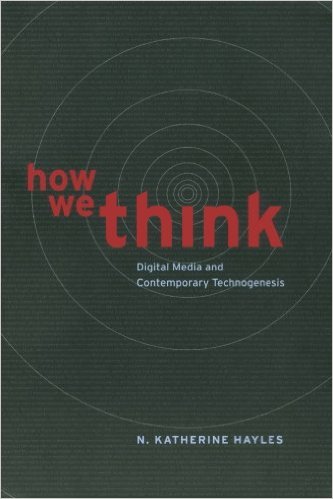 a review of N. Katherine Hayles, How We Think: Digital Media and Contemporary Technogenesis (Chicago, 2012)
a review of N. Katherine Hayles, How We Think: Digital Media and Contemporary Technogenesis (Chicago, 2012)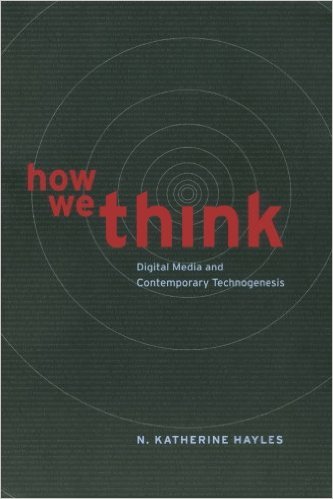
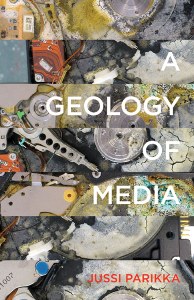
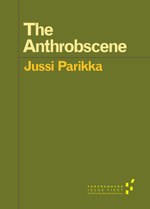 a review of Jussi Parikka, A Geology of Media (University of Minnesota Press, 2015) and The Anthrobscene (University of Minnesota Press, 2015)
a review of Jussi Parikka, A Geology of Media (University of Minnesota Press, 2015) and The Anthrobscene (University of Minnesota Press, 2015)